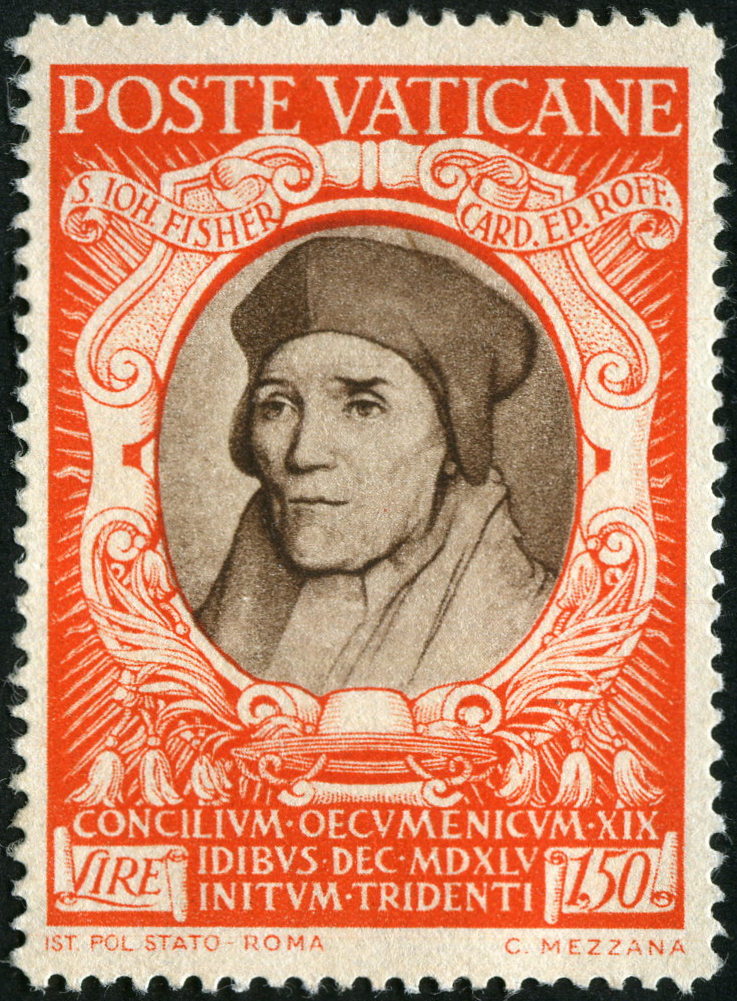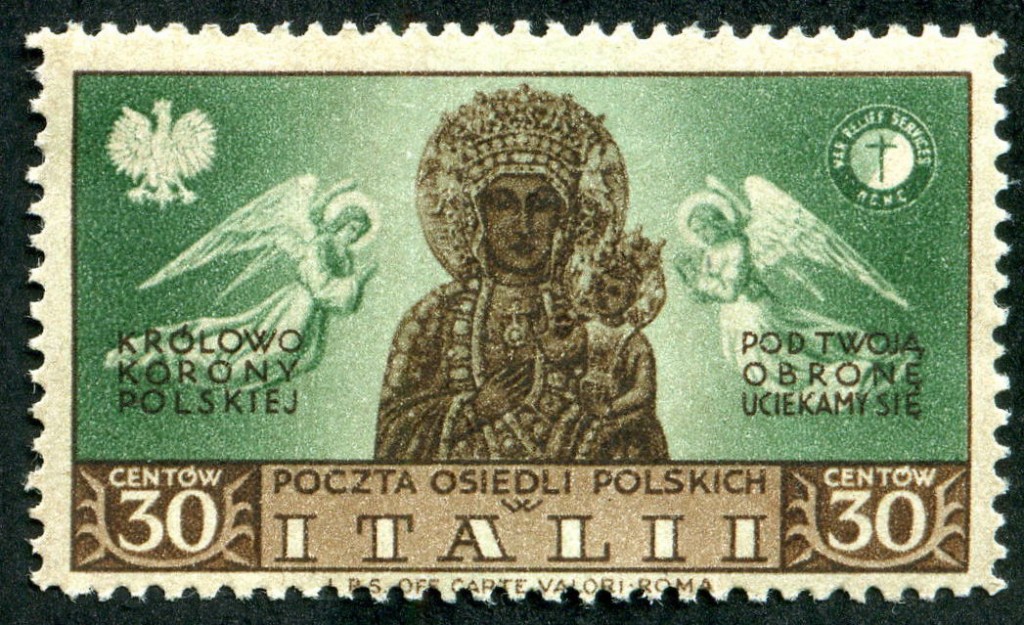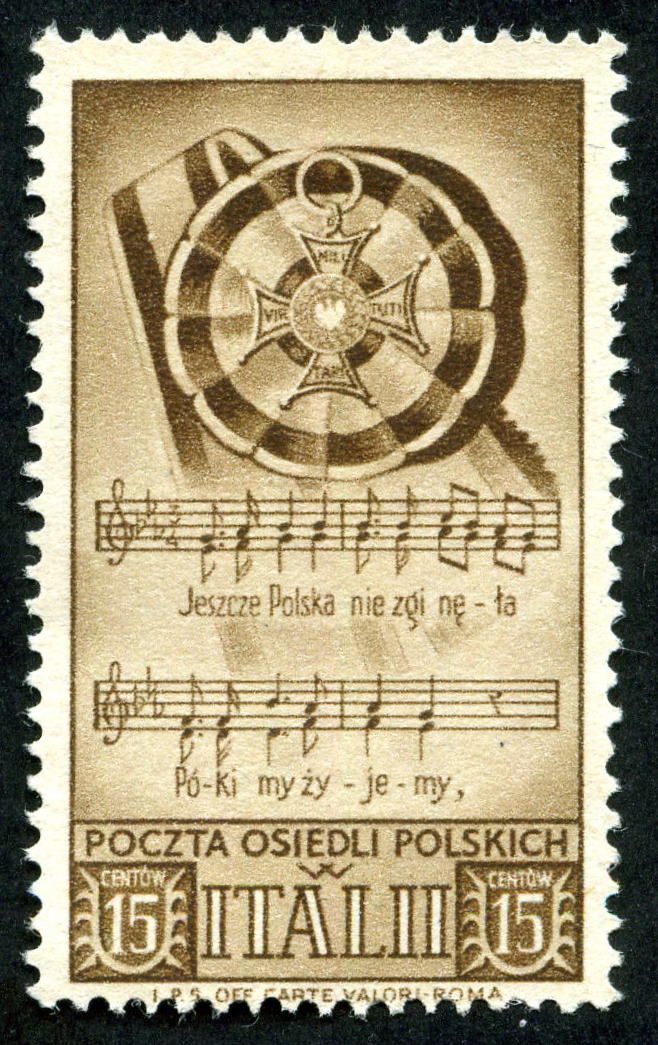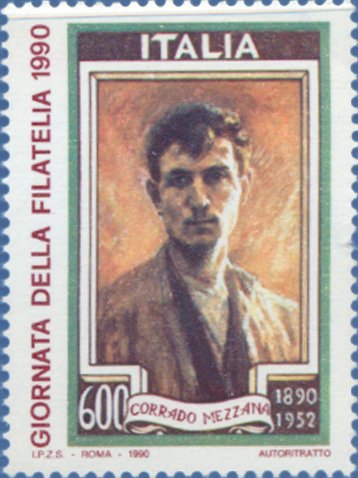Post by rod222 on Sept 1, 2013 4:24:09 GMT
This thread is dedicated to an Italian master of design in stamps.
All and any info welcomed to contribute.
Not a great deal of English language information available, in my past searches.
Some information in Italian:?
Franco FILANCI. Una "Giornata" per Mezzana. In: Cronaca Filatelica, Anno XX, n°
157, (Nov. 1990), Napoli.
Racconta la storia di una mancata emissione per la Dalmazia progettata nel 1941-42 i
cui bozzetti furono realizzati da Corrado Mezzana. Elenca inoltre gli Uffici postali
della Dalmazia annessa all'Italia dopo il 1941. In copertina della rivista una splendida
riproduzione, colorata, dei bozzetti realizzati da C. Mezzana.
A Wiki Translation
He was born in Rome, June 7, 1890, and his life and his varied activities are part of the city that was clear mother and that he loved with passion and Italian artist.
The natural tendency for art, which illuminated his youth, started him on classical studies: in 1903 he obtained a Baccalaureate in 1912 and a law degree. The same thesis - published in volume and
widely appreciated - on "The legislation of the fine arts and antiques" is a documentation of his vocation constant.
In 1906, in fact, while still in high school in Pio Joris had found a valuable guide in painting. The study Joris and the free school of nude at the Institute of Fine Arts marked the beginning of his studies.
The intense artistic preparation - then made freely without constraints school - and the innate genius in 1912 won him the painting competition "Original" of the Royal Academy of S. Luke, achieving a
pension for 10 years. This recognition, he added, in 1914, to obtain the qualification of the teaching drawing in normal schools and technical and industrial institutes in the art teaching certificate.
Its preparation, even in the technical professional suscitiò the keenest interest from illustrious masters.
Corrado Mezzana - in 1914 - was named as Secretary, to work the Encyclopedia of Fine Art directed by Giovannoni, Hermanin, and Paribeni Parpagliolo.
His passion for architecture is proven to be a significant event: no one had bothered to photograph or face reliefs on the building before it was demolished by Vignola for redevelopment of the Boardwalk
Archaeology. Only Mezzana, in his notes. had made a pencil drawing of the elegant building, design that allowed perfect reconstruction of the building not far from the original.
In 1915 began the inseguaiiiento of pictorial design and temperature in the School of Ornamental Art City of Rome, a chair he held for 35 years. In this teaching he added later that the story
the art. A unique teaching he practiced already as "engineer" Circle of Michelangelo Buonarroti, who was a lively meeting place for young artists and students of fine arts.
The First World War interrupted his laborious life as a scholar and artist. In 1916 he collaborated with
organization of the Military Hospital "De Merode." In 1917 and in 1918 participated in the war as an officer
artillery. In 1919 he returned to his job, he married Albertina Giorelli and his peaceful house - cheered by the
birth of five children - became the spiritual center of his busy life.
Since the war ended in 1922, he was art director at the Film Thespis. He then devoted himself mainly to
painting, not
neglecting, on the other, the teaching that represented for him an apostolate of art and goodness.
Mention the hard work of his multifarious activities All activities which affected Rome and its traditions
it had a valid sponsor. He worked for the return of the Cross in the Colosseum and the Capitol, promoted the
Restoration of famous buildings and defenses - against all corruption - precious memories.
In his vocation, for the defense of beauty, goodness and dIella social solidarity is the framework for activities
which he devoted himself with admirable passion and profound disinterest until the end of his life.
He was a member, since the establishment of the Pontifical Commission for Sacred Art in Central Italy: its
Collaboration in this area became intense after the Second World War for the reconstruction of churches
destroyed. His advice, his clear vision of the artistic and religious needs of our country were
highly appreciated and followed.
The Pontifical Academy of Distinguished Virtuosi at the Pantheon had among its most active. His work
maintained the prestige of the old Institute of which he was also Vice President in recent years. In that capacity
was a
of the main organizers, tireless and patient, the International Exhibition of Sacred Art in the Holy
, 1950.
He joined the activities to be truly artistic, from 1944 onwards, a busy working towards the craft. In
1945 was one of the promoters of the National Handicraft Centre. Elected Vice President of the General
Conference in
1947, he left that office to assume the presidency of the National Crafts and Small Industries
ENAPI), an institution that seemed destined to disappear for the inactivity which had condemned the war
and the immediate postwar period. Under his intelligent and passionate Judas Ente resources by implementing a
new life
clear guidelines from the artistic point of view and also by technical competitions, providing models and
the like.
At these positions, which absorbed so much of his long day of work, we have to add those
Art in the Association International, and other advisers in the Pio Institute Catel, the Catholic Union
Italian artists, the Art Association of Catholic Workers, the Action Committee for the Study and
Family Businesses and the National Handicraft Centre, all means for him to work at the
arts and craft activities and the rebirth of social and economic categories producing more modest.
The brief given to his partnership in the International Exhibition of Sacred Art 1950 can not excuse ourselves
from
remember his concern for the annual craft exhibition at the Milan Fair, the Selective View
National Handicraft Artistic Angelicum of Milan, for the Exhibition-Market of Florence, for the Show
furniture of the sacred in Rome and exhibition of Italian artisans in Chicago, Toronto, Monaco and elsewhere.
Not to mention briefly the regional exhibitions.
From the list of works and its bibliography is finally the intense activity both as Corrado Mezzana
painter and as a scholar. Among his most interesting contributions to the history of art is worth reporting in
especially the study Bernini altar in the Sanctuary of the Visitation of Savona he identified as
Cosimo Fancelli; research on Leonardo Sormano figure sculptor until then so uncertain, the
publication on the silver casket of St. Venancio at Camerino and finally a monograph on the Shrine of SS.
Trinity on the Mount Author, with special regard to the medieval frescoes.
Despite the severe handicap suffered the loss of 'right eye, caused by the evil that is slowly
possession of it for him, Corrado Mezzana continued his multifarious activities until physically destroyed, but
with soul immutably serene and resigned, died in Rome September 15, 1952.
All and any info welcomed to contribute.
Not a great deal of English language information available, in my past searches.
Some information in Italian:?
Franco FILANCI. Una "Giornata" per Mezzana. In: Cronaca Filatelica, Anno XX, n°
157, (Nov. 1990), Napoli.
Racconta la storia di una mancata emissione per la Dalmazia progettata nel 1941-42 i
cui bozzetti furono realizzati da Corrado Mezzana. Elenca inoltre gli Uffici postali
della Dalmazia annessa all'Italia dopo il 1941. In copertina della rivista una splendida
riproduzione, colorata, dei bozzetti realizzati da C. Mezzana.
A Wiki Translation

He was born in Rome, June 7, 1890, and his life and his varied activities are part of the city that was clear mother and that he loved with passion and Italian artist.
The natural tendency for art, which illuminated his youth, started him on classical studies: in 1903 he obtained a Baccalaureate in 1912 and a law degree. The same thesis - published in volume and
widely appreciated - on "The legislation of the fine arts and antiques" is a documentation of his vocation constant.
In 1906, in fact, while still in high school in Pio Joris had found a valuable guide in painting. The study Joris and the free school of nude at the Institute of Fine Arts marked the beginning of his studies.
The intense artistic preparation - then made freely without constraints school - and the innate genius in 1912 won him the painting competition "Original" of the Royal Academy of S. Luke, achieving a
pension for 10 years. This recognition, he added, in 1914, to obtain the qualification of the teaching drawing in normal schools and technical and industrial institutes in the art teaching certificate.
Its preparation, even in the technical professional suscitiò the keenest interest from illustrious masters.
Corrado Mezzana - in 1914 - was named as Secretary, to work the Encyclopedia of Fine Art directed by Giovannoni, Hermanin, and Paribeni Parpagliolo.
His passion for architecture is proven to be a significant event: no one had bothered to photograph or face reliefs on the building before it was demolished by Vignola for redevelopment of the Boardwalk
Archaeology. Only Mezzana, in his notes. had made a pencil drawing of the elegant building, design that allowed perfect reconstruction of the building not far from the original.
In 1915 began the inseguaiiiento of pictorial design and temperature in the School of Ornamental Art City of Rome, a chair he held for 35 years. In this teaching he added later that the story
the art. A unique teaching he practiced already as "engineer" Circle of Michelangelo Buonarroti, who was a lively meeting place for young artists and students of fine arts.
The First World War interrupted his laborious life as a scholar and artist. In 1916 he collaborated with
organization of the Military Hospital "De Merode." In 1917 and in 1918 participated in the war as an officer
artillery. In 1919 he returned to his job, he married Albertina Giorelli and his peaceful house - cheered by the
birth of five children - became the spiritual center of his busy life.
Since the war ended in 1922, he was art director at the Film Thespis. He then devoted himself mainly to
painting, not
neglecting, on the other, the teaching that represented for him an apostolate of art and goodness.
Mention the hard work of his multifarious activities All activities which affected Rome and its traditions
it had a valid sponsor. He worked for the return of the Cross in the Colosseum and the Capitol, promoted the
Restoration of famous buildings and defenses - against all corruption - precious memories.
In his vocation, for the defense of beauty, goodness and dIella social solidarity is the framework for activities
which he devoted himself with admirable passion and profound disinterest until the end of his life.
He was a member, since the establishment of the Pontifical Commission for Sacred Art in Central Italy: its
Collaboration in this area became intense after the Second World War for the reconstruction of churches
destroyed. His advice, his clear vision of the artistic and religious needs of our country were
highly appreciated and followed.
The Pontifical Academy of Distinguished Virtuosi at the Pantheon had among its most active. His work
maintained the prestige of the old Institute of which he was also Vice President in recent years. In that capacity
was a
of the main organizers, tireless and patient, the International Exhibition of Sacred Art in the Holy
, 1950.
He joined the activities to be truly artistic, from 1944 onwards, a busy working towards the craft. In
1945 was one of the promoters of the National Handicraft Centre. Elected Vice President of the General
Conference in
1947, he left that office to assume the presidency of the National Crafts and Small Industries
ENAPI), an institution that seemed destined to disappear for the inactivity which had condemned the war
and the immediate postwar period. Under his intelligent and passionate Judas Ente resources by implementing a
new life
clear guidelines from the artistic point of view and also by technical competitions, providing models and
the like.
At these positions, which absorbed so much of his long day of work, we have to add those
Art in the Association International, and other advisers in the Pio Institute Catel, the Catholic Union
Italian artists, the Art Association of Catholic Workers, the Action Committee for the Study and
Family Businesses and the National Handicraft Centre, all means for him to work at the
arts and craft activities and the rebirth of social and economic categories producing more modest.
The brief given to his partnership in the International Exhibition of Sacred Art 1950 can not excuse ourselves
from
remember his concern for the annual craft exhibition at the Milan Fair, the Selective View
National Handicraft Artistic Angelicum of Milan, for the Exhibition-Market of Florence, for the Show
furniture of the sacred in Rome and exhibition of Italian artisans in Chicago, Toronto, Monaco and elsewhere.
Not to mention briefly the regional exhibitions.
From the list of works and its bibliography is finally the intense activity both as Corrado Mezzana
painter and as a scholar. Among his most interesting contributions to the history of art is worth reporting in
especially the study Bernini altar in the Sanctuary of the Visitation of Savona he identified as
Cosimo Fancelli; research on Leonardo Sormano figure sculptor until then so uncertain, the
publication on the silver casket of St. Venancio at Camerino and finally a monograph on the Shrine of SS.
Trinity on the Mount Author, with special regard to the medieval frescoes.
Despite the severe handicap suffered the loss of 'right eye, caused by the evil that is slowly
possession of it for him, Corrado Mezzana continued his multifarious activities until physically destroyed, but
with soul immutably serene and resigned, died in Rome September 15, 1952.























